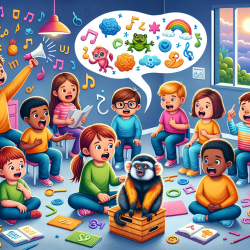Unlocking the Power of Vocal Communication: Insights from Pygmy Marmosets
In the ever-evolving field of special education, understanding the nuances of communication is paramount. Recent research into the vocal communication of pygmy marmosets offers fascinating insights that can be applied to enhance educational practices, particularly in the realm of speech and language therapy.
The Study: Cognitive Components of Vocal Communication
The study titled Cognitive Components of Vocal Communication: A Case Study by Charles T. Snowdon delves into the vocal behaviors of pygmy marmosets, the world's smallest true monkeys. Despite their small brain size, these primates exhibit complex cognitive skills in their vocal interactions, challenging the traditional views of nonhuman primate communication.
Key Findings and Their Implications
Here are some key findings from the study and how they can be applied in educational settings:
- Vocal Flexibility: Pygmy marmosets modify their vocalizations based on social and environmental contexts. This flexibility can inspire educators to encourage adaptive communication strategies in students, particularly those with speech and language difficulties.
- Social Reinforcement: The study highlights the role of social interactions in reinforcing vocal development. Educators can apply this by creating supportive environments where students receive positive reinforcement for their communication efforts.
- Babbling and Learning: The babbling behavior of pygmy marmosets parallels that of human infants, suggesting that early vocalizations play a crucial role in language development. This emphasizes the importance of nurturing early communication attempts in children.
Encouraging Further Research
While the study provides valuable insights, it also opens the door for further research. Practitioners are encouraged to explore the following areas:
- Investigating the impact of social dynamics on communication development in children with special needs.
- Exploring the potential of using animal models to understand human communication disorders.
- Developing innovative therapy techniques inspired by the vocal strategies of pygmy marmosets.
By embracing the lessons from this research, educators and therapists can enhance their practices, ultimately leading to better outcomes for students with communication challenges.
To read the original research paper, please follow this link: Cognitive Components of Vocal Communication: A Case Study.










